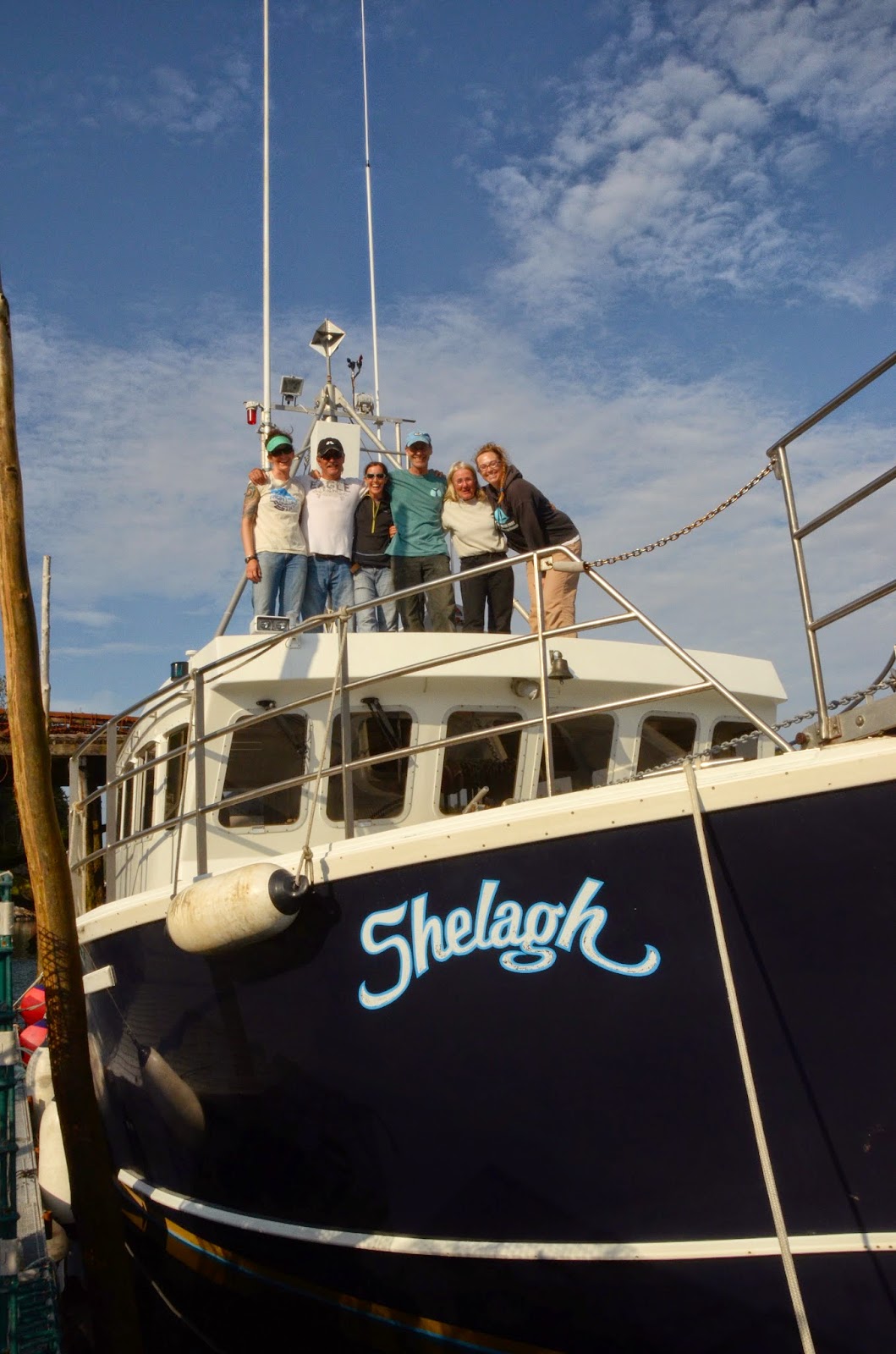Fin whale skeleton- a different kind of lawn ornament.
We left Daniel's Head at the crack of dawn the next day on August 24 to steam south towards the eastern edge of Roseway Basin. This day held few right whale sightings for us- strong winds and a swell obscured animals at the surface, making them difficult to track and collect photos. Two of the four whales we photographed were very familiar to us- Aphrodite (Catalog #1701) and Caterpillar (#3503).
Caterpillar, not exactly crawling away. Photo: Philip Hamilton
The seas calmed overnight, and we woke on August 25 to a beautiful sea state 1. As soon as Philip and Marianna got on watch, blows were sighted and the rest of the crew were woken up to help with documentation. We had about five whales in close proximity all traveling in the same direction, but each surfacing at different times. Our photographers and whale watcher were kept on their toes- it was almost like playing that whac-a-mole arcade game! As we continued westerly on our survey, sightings became less frequent, and the rest of the day was pretty quiet.
Catalog #1304 fluking. Photo: Marianna Hagbloom
Our final day on the western edge of Roseway Basin would also be a quiet one- only one right whale was seen! This young whale was also travelling, but we were able to collect photographs before he/she disappeared.
A unique look at a right whale swimming beneath a glassy sea. Photo: Kelsey Howe
After long hours of survey with very few sightings to record, a small Kemp's Ridley turtle was spotted amongst some seaweed close to the Shelagh. Concerned due to its lack of movement, we turned around to check it out. It looked as though this turtle had been taste-tested, as teeth marks were seen on the carapice- we're guessing this is why the turtle appeared to be in poor health. Troubled but unable to help, we sadly had to leave this endangered turtle behind.
Injured Kemp's Ridley sea turtle. Photo: Kelsey Howe
A wall of fog met us as we wrapped up our Roseway surveys, and soon we were travelling home under a starlit night. Captain Joe manned the helm round-the-clock as each of us took turns keeping watch with him. Arriving back at port on Campobello Island in the morning, the crew organized gear, inventoried non-perishables and packed our belongings. It would only be a matter of days before the second offshore journey would begin and the Shelagh would be surveying Roseway Basin once again...
The Shelagh crew celebrates the end the first offshore expedition. Photo: Jerry Conway
-Marianna
























